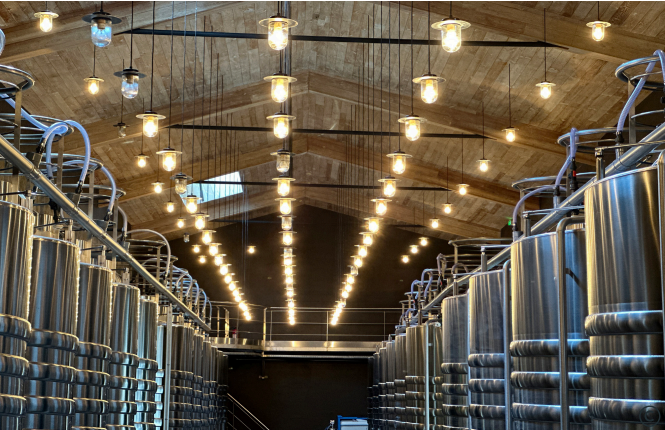CO2 CAPTURE, CIRCULAR ECONOMY AND WATER MANAGEMENT IN WINEMAKING

Chateau Latour (France) exemplifies sustainable winemaking through CO2 capture, circular resource use, and efficient water management
Information
Sector:
Agriculture, forestry and fishing,
Manufacture of food, beverages and tobacco
Industrial ecosystem(s):
Environmental Impacts:
Environmental sustainability of products and processes/operations, GHG reduction and capture (non-energy)
Estimated Resource Saving:
20-50%
Transforming the fermentative CO2 into a valuable resource for winemakers:
The technology captures the CO₂ emitted during fermentation and recovers it in different forms: liquid, gaseous and solid. The Box analyzes, purifies and compresses the gas, which is safely stored in storage racks, ready for reuse. The system is automated to work day and night without human intervention. This approach is part of a circular economy, reducing CO2 losses and transforming it into an asset for the winery.
This project is part of a virtuous cycle where the produced gas (byproduct of fermentation) can be redistributed. The main applications are: using CO2’s weight to increase inerting, and lowering the water pH for faster neutralization when cleaning tanks with lye. Moreover, the integration in the grape reception equipment: CO2 injected into the tap water, through a simple garden hose.
Other potential uses of the generated CO2: as dry ice to inert the tanks and protect against oxidation, preventing wine spoilage; and for making sparkling wines.
The technology captures the CO₂ emitted during fermentation and recovers it in different forms: liquid, gaseous and solid. The Box analyzes, purifies and compresses the gas, which is safely stored in storage racks, ready for reuse. The system is automated to work day and night without human intervention. This approach is part of a circular economy, reducing CO2 losses and transforming it into an asset for the winery.
This project is part of a virtuous cycle where the produced gas (byproduct of fermentation) can be redistributed. The main applications are: using CO2’s weight to increase inerting, and lowering the water pH for faster neutralization when cleaning tanks with lye. Moreover, the integration in the grape reception equipment: CO2 injected into the tap water, through a simple garden hose.
Other potential uses of the generated CO2: as dry ice to inert the tanks and protect against oxidation, preventing wine spoilage; and for making sparkling wines.
KEY RESULTS
This circular economy model reduces the carbon footprint and fossil fuel purchases, while improving the sustainability of wineries.
- Extraction of CO2 from the cellar improves the work environment in the cellar as workers and operators are no longer affected by a high concentration of CO2.
- The carbon balance of CO2 compression: consumes 10 kg of CO2 to compress a ton of CO2.
- CO2 Water: Around 50% reduction in water use for cleaning.
- CO2 Water in grape reception equipment: faster as there’s more pressure.